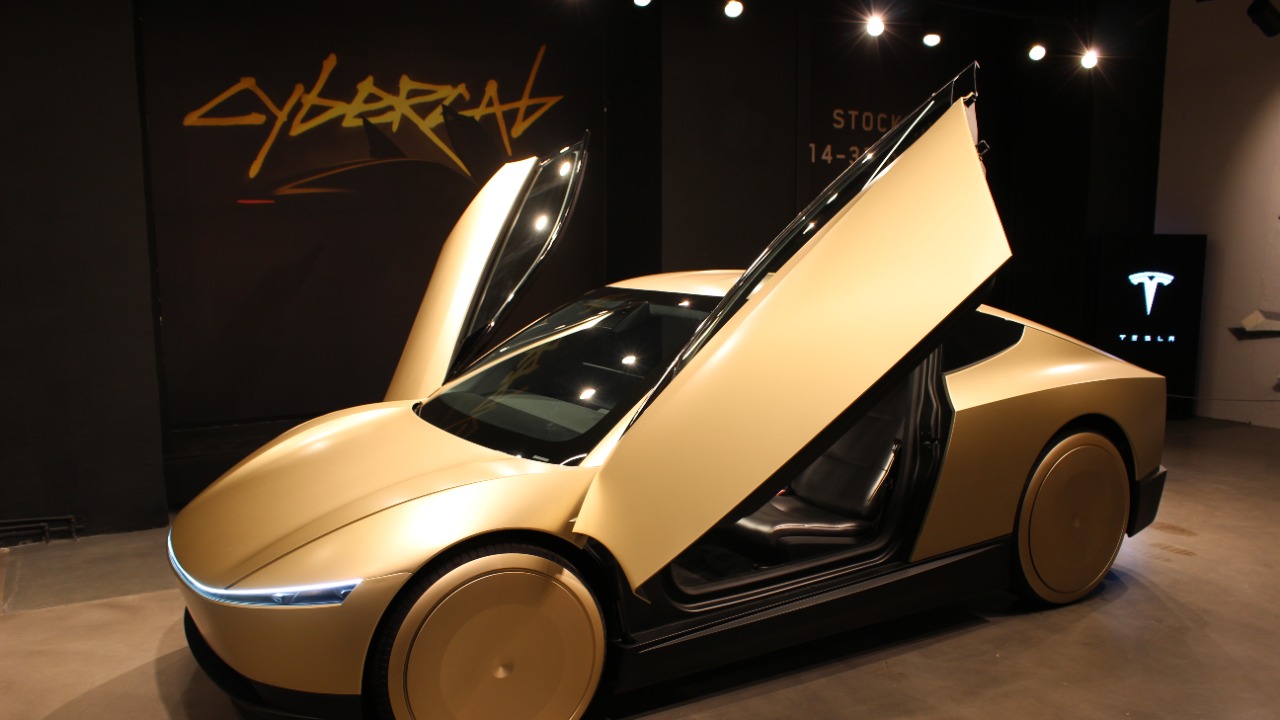
In a recent turn of events, Tesla has hinted that its Cybercab robotaxi, originally conceived as a fully autonomous vehicle devoid of a steering wheel or pedals, might incorporate these manual controls after all. This shift in design strategy, indicated by Elon Musk’s comment, “If We Have To,” underscores the company’s adaptability as it gears up for production. This development, reported on October 28 and 29, 2025, stands in contrast to Tesla’s earlier indications in March 2025 that it might eschew new car launches in favor of a stripped-down Model Y.
Cybercab’s Original Design Vision
When Tesla first unveiled the Cybercab, it was presented as a purpose-built robotaxi designed for unsupervised full self-driving, without any steering wheel or pedals. This was a clear demonstration of Tesla’s commitment to advancing autonomous vehicle technology. Elon Musk, during the unveiling, promoted the vehicle as a two-passenger electric cab that would rely solely on AI for navigation and operation.
This design vision was in line with Tesla’s broader goal of eliminating human controls to reduce costs and simplify manufacturing. By removing the steering wheel and pedals, Tesla aimed to streamline the production process and lower the overall cost of the vehicle, making it more accessible to a wider market.
Signals of a Potential Design Reversal
However, recent reports from October 28, 2025, suggest that Tesla may be reconsidering its original design. The company has indicated that it may add a steering wheel and pedals to the Cybercab as a precautionary measure. This potential design reversal was hinted at by Elon Musk’s remark, “‘If We Have To,’” suggesting that the company is open to including manual overrides if required by regulators or safety standards.
Analysts have interpreted these signals as a pragmatic shift by Tesla to ensure a faster market entry for the Cybercab. By including manual controls, Tesla could potentially bypass regulatory hurdles that might otherwise delay the launch of the Cybercab.
Regulatory Pressures Influencing the Change
Regulatory pressures, both in the U.S. and internationally, could be a significant factor influencing Tesla’s potential design reversal. Autonomous vehicle regulations could necessitate backup manual controls, as implied in coverage of Tesla’s evolving plans. Furthermore, the Federal Motor Vehicle Safety Standards (FMVSS) might classify the Cybercab differently if it is equipped with a steering wheel, potentially affecting its certification and market entry.
An October 29, 2025, report suggested that Tesla might be considering steering wheel backup options as a response to these certification hurdles. This indicates that regulatory pressures are playing a significant role in shaping the final design of the Cybercab.
Comparison to Tesla’s Broader Product Strategy
The potential design adjustments to the Cybercab contrast with Tesla’s broader product strategy. In March 2025, Tesla revealed plans for no new car launches, instead focusing on a stripped-down Model Y variant. This strategy was aimed at repurposing existing platforms for cost efficiency.
Adding manual controls to the Cybercab could align with this strategy, as it would allow Tesla to leverage existing technologies and platforms. However, it could also complicate the production process and potentially impact the scalability of Tesla’s robotaxi fleet.
Market and Consumer Implications
The inclusion of a steering wheel in the Cybercab could appeal to early adopters who are wary of full autonomy, potentially accelerating adoption rates. However, it could also impact the vehicle’s pricing. The original Cybercab was targeted to cost under $30,000, and the addition of manual controls could affect this affordability.
In the competitive landscape of autonomous vehicles, rivals like Waymo operate without manual controls. Tesla’s potential hybrid approach, combining autonomous driving with manual controls, could serve as a differentiator in the market.
Future Production and Timeline Outlook
Tesla anticipates a 2026 production start for the Cybercab, with the flexibility to include a steering wheel based on ongoing regulatory feedback. Elon Musk has projected that there will be millions of robotaxis on the road by 2027, and design tweaks like “‘If We Have To’” backups could support these goals.
Looking ahead, testing phases, including supervised trials, could validate the need for manual overrides before the Cybercab is deployed for unsupervised operation. This would ensure that the vehicle meets safety standards and regulatory requirements, paving the way for its successful launch.
More from MorningOverview